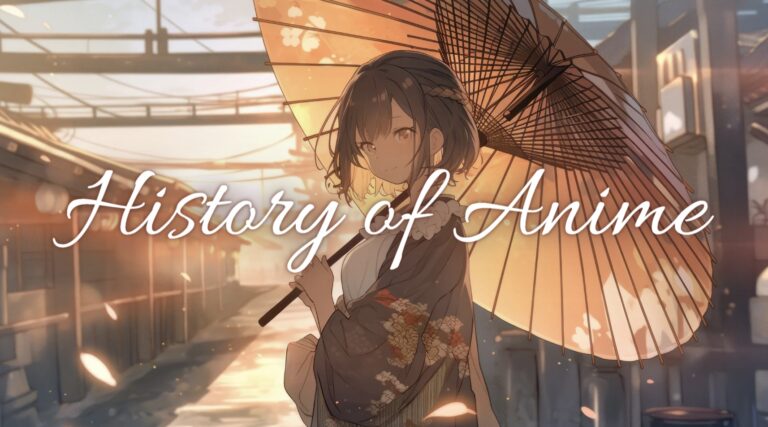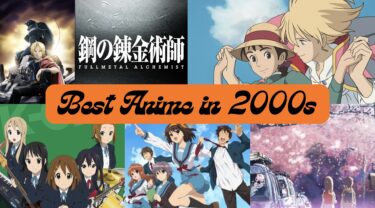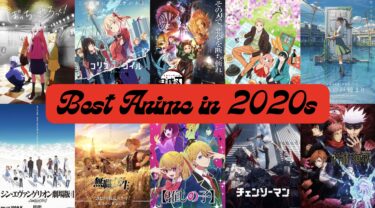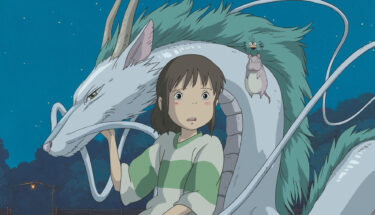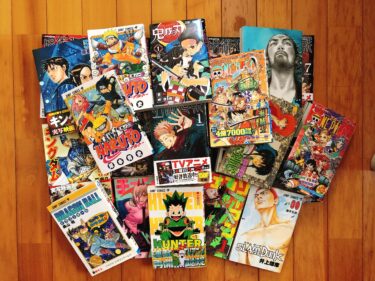Anime is now a globally popular content, but where do you think anime’s history lies?
It is widely recognized that anime is a pop culture born in Japan. However, it can also be seen that the history of anime developed in Japan with the introduction of techniques from several countries around the globe. The connection with the history of manga, which many popular anime are based on, is also interesting. Moreover, anime has developed in a unique way compared to animations around the world.
This article aims not only to introduce the popular anime of each era but also to explore what are considered the important classical works that became the foundation of modern anime, why anime has developed so much in Japan, and where the roots of anime can be traced back to over a span of about 100 years.
By learning about the history of these anime, your current anime experience should become deeper and more enriching. The history of anime explained here is enjoyable even for anime beginners and also serves as a guide to watching anime throughout the ages.
Now, let’s embark on a time travel to trace the evolution of anime!
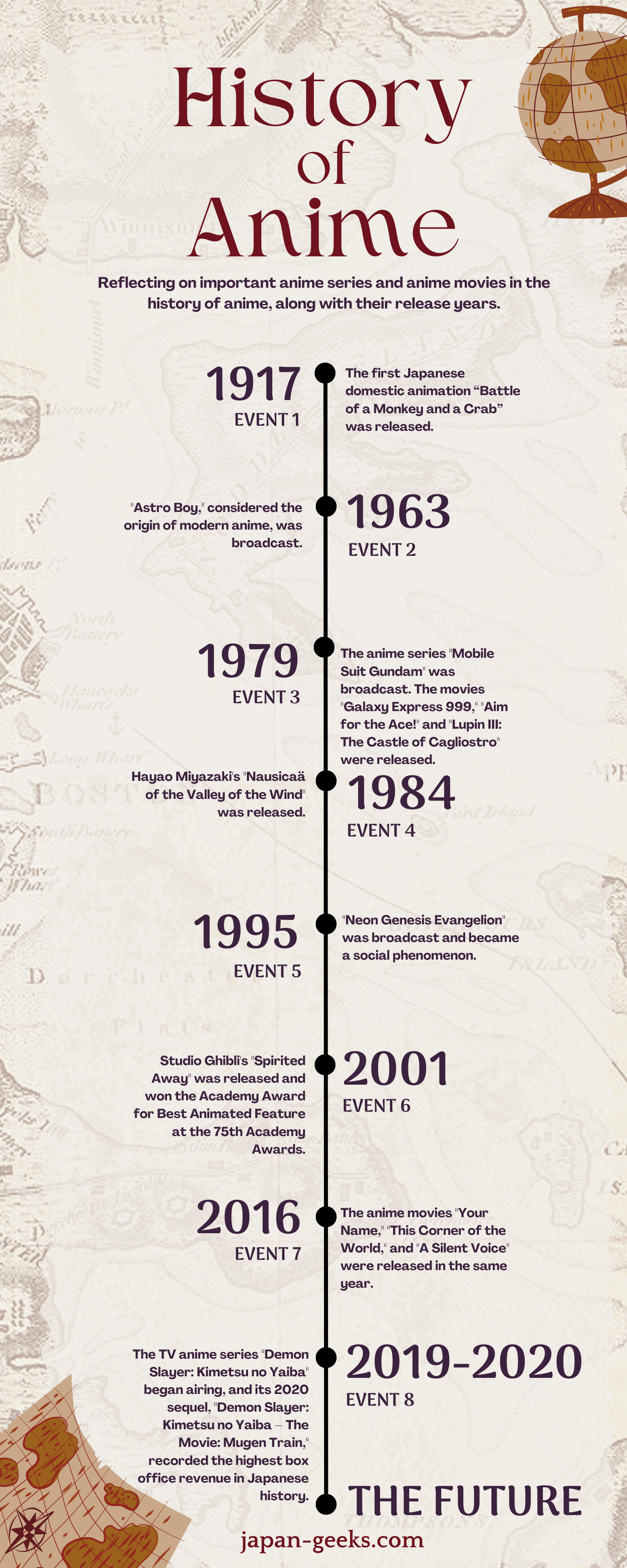
What is Anime?
It is commonly thought that the term “anime” is a shorthand for animations born in Japan. For instance, when people in Japan refer to animations, they might think of works by Disney or Pixar, but “anime” specifically denotes the kind of works that originated in Japan and are broadcast on TV, the so-called “anime” productions.
Anime is often confused with manga, but the difference between anime and manga can simply be understood as anime being manga (comic books) brought to life through animation technology.
The term “animation” became widespread in Japan after World War II, and the word “anime” emerged in the 1960s, becoming widely entrenched in the 1970s. While the term “anime” is now globally recognized, it is said that it began to be widely used in English and French in the 1990s.
The Origins of Anime
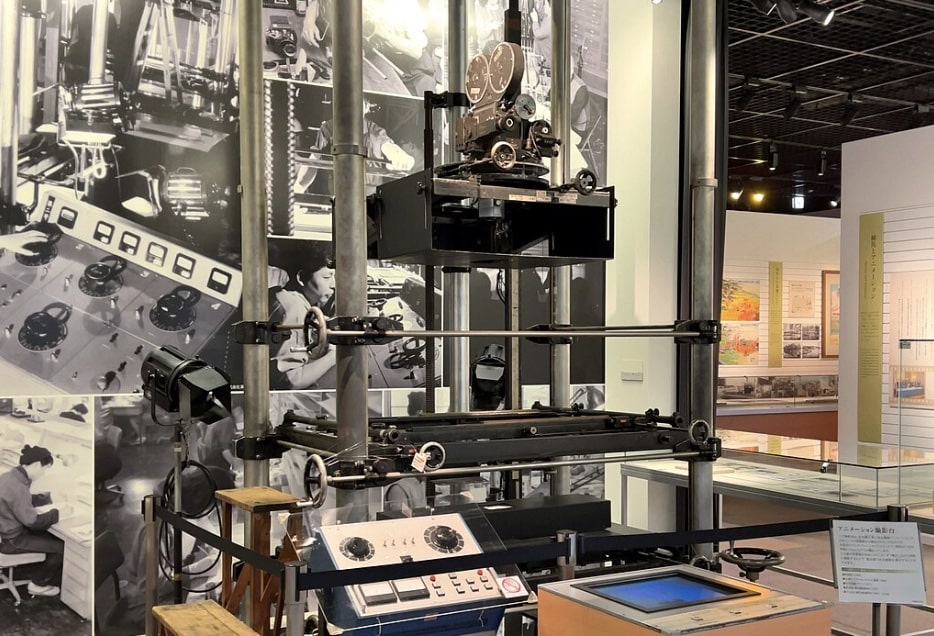
The prototype of modern anime series (different from anime movies, referring to those first broadcast on TV or distributed on streaming sites) is commonly understood to be “Astro Boy (鉄腕アトム),” which aired in 1963. However, the history of anime itself can be traced back even further.
In the sense of moving pictures, flip books, where sequential drawings in the corner of a book are flipped through quickly, could also be considered an origin of anime. In this regard, in the 19th century, devices like the phenakistoscope and the zoetrope were invented, which created the illusion of motion by spinning a series of images. The cinematograph, devised by the Lumière brothers in France in 1895, can be considered the origin of modern cinema.
In Japan, now known as a major anime-producing country, the first domestic animation was released in 1917 by Seitaro Kitayama, with the work “Battle of a Monkey and a Crab (猿蟹合戦 (サルとカニの合戦)).” Other early animation creators like Oten Shimokawa and Junichi Kouchi also released works like “The Dull Sword (塙凹内名刀之巻 (なまくら刀))” in the same year, making 1917 a landmark year for anime.
Traditional Japanese artistic expressions, such as Ukiyo-e and Hokusai Manga, also contributed to the unique development of anime. For example, Isao Takahata (高畑勲) of Studio Ghibli is known for his focus on emakimono (picture scrolls).
In this initial stage of anime, the invention of cell animation greatly contributed to the improvement of animation techniques. John Randolph Bray, who produced the first commercial animation in the United States in 1913, invented the technique of cell animation. This innovation made it possible to divide the animation production process among many animators. Walt Disney was one who significantly advanced and utilized cell animation.
Since then, animation has been used for various purposes beyond entertainment, including advertising, education, avant-garde art, and even propaganda. “Momotaro: Sacred Sailors (桃太郎 海の神兵),” a propaganda film released in 1945 with a runtime of 74 minutes, can be considered Japan’s first feature-length animation. Inspired by this work, Osamu Tezuka, also known as the God of Manga, decided to pursue a career in animation production.
Anime in the Early Stage
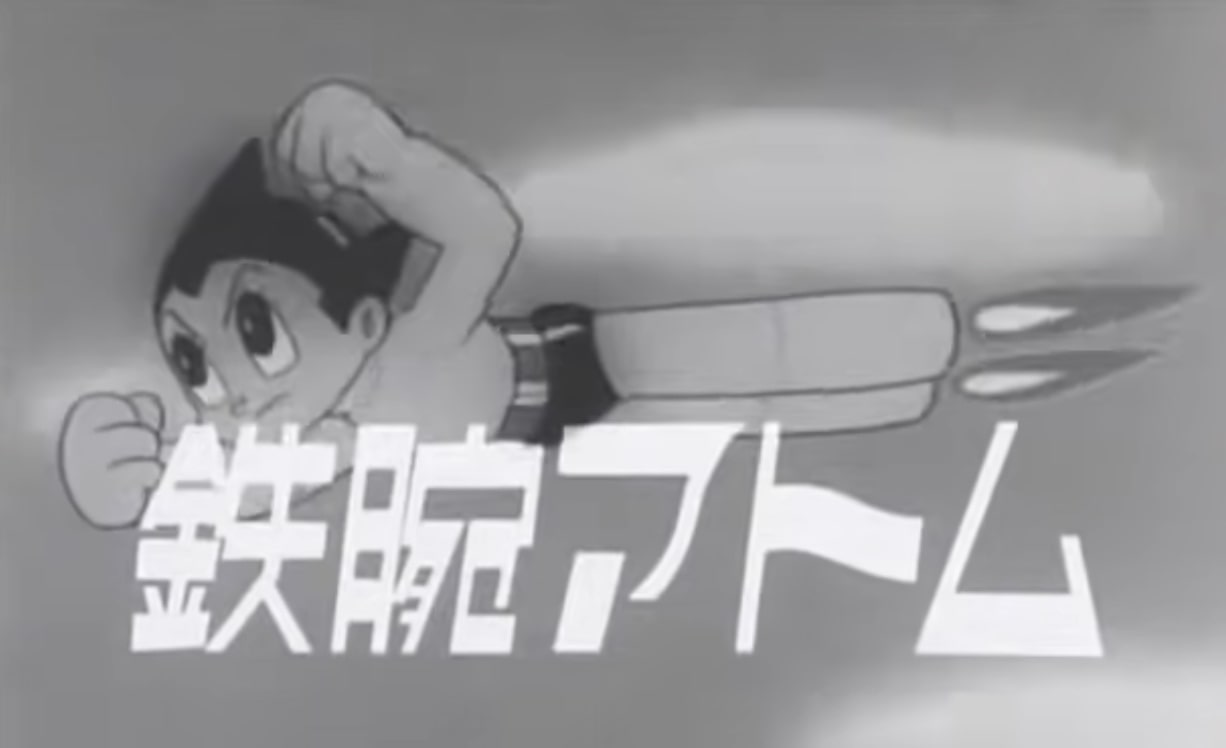
In 1953, Japan saw its first commercial television broadcasting, and finally, in 1963, one of the most pivotal years in the history of anime, the anime series Astro Boy was aired. Based on the manga by Osamu Tezuka, it was animated by Mushi Production, which he himself founded. That same year, it was imported and broadcast in the United States under the title Astro Boy. This anime is considered a prototype of modern anime, tracing the direct roots of contemporary anime.
So, why is Astro Boy considered such an important anime? There are three main reasons. First, it established the format of airing approximately 30-minute episodes on a weekly basis, which is still the typical format for anime broadcasting today. Second, associated with this, it developed a system for producing anime with a small number of people. At the time, hundreds of animators were needed to produce a 30-minute anime episode weekly, but by adopting the method of limited animation, they focused on how to make fewer frames appear to be moving, realizing production with just a dozen or so people. Furthermore, Astro Boy set an example in how to boost the business surrounding anime. The opening theme song of Astro Boy sold very well, leading to the current recognition of anime theme songs as a part of pop culture, known as “Anisong”. The business model of including anime items as freebies with snacks can also be traced back to Astro Boy. In terms of establishing broadcasting style, streamlining anime production, and creating surrounding businesses, Astro Boy is considered the most important work in tracing the history of modern anime.
Of course, there were significant events just before 1963 as well. Hayao Miyazaki and Isao Takahata, now the most famous anime directors in Japan, can trace their origins back to this period. The feature-length animation “La Bergère et le Ramoneur (やぶにらみの暴君),” released in France in 1952, influenced both Miyazaki and Takahata. And “The White Snake Enchantress (白蛇伝),” the first feature-length animation by Toei Animation released in 1958, is considered the starting point for Japan, now known as a major country for feature-length anime films. Although short animations were mainstream at the time, this was the first commercial success as a feature-length work. It was also the trigger for Hayao Miyazaki’s interest in anime. He joined Toei Animation in 1963.
Toei Animation led the early days of Japanese anime, but it’s also important to mention Kenzo Masaoka, known as “the father of Japanese animation” and one of the founders of Nihon Doga Co., Ltd., the precursor to Toei Animation. His establishment of such a base for anime production contributed significantly to the growth of anime, allowing figures like Miyazaki and Takahata to hone their skills.
Anime in the 1970s
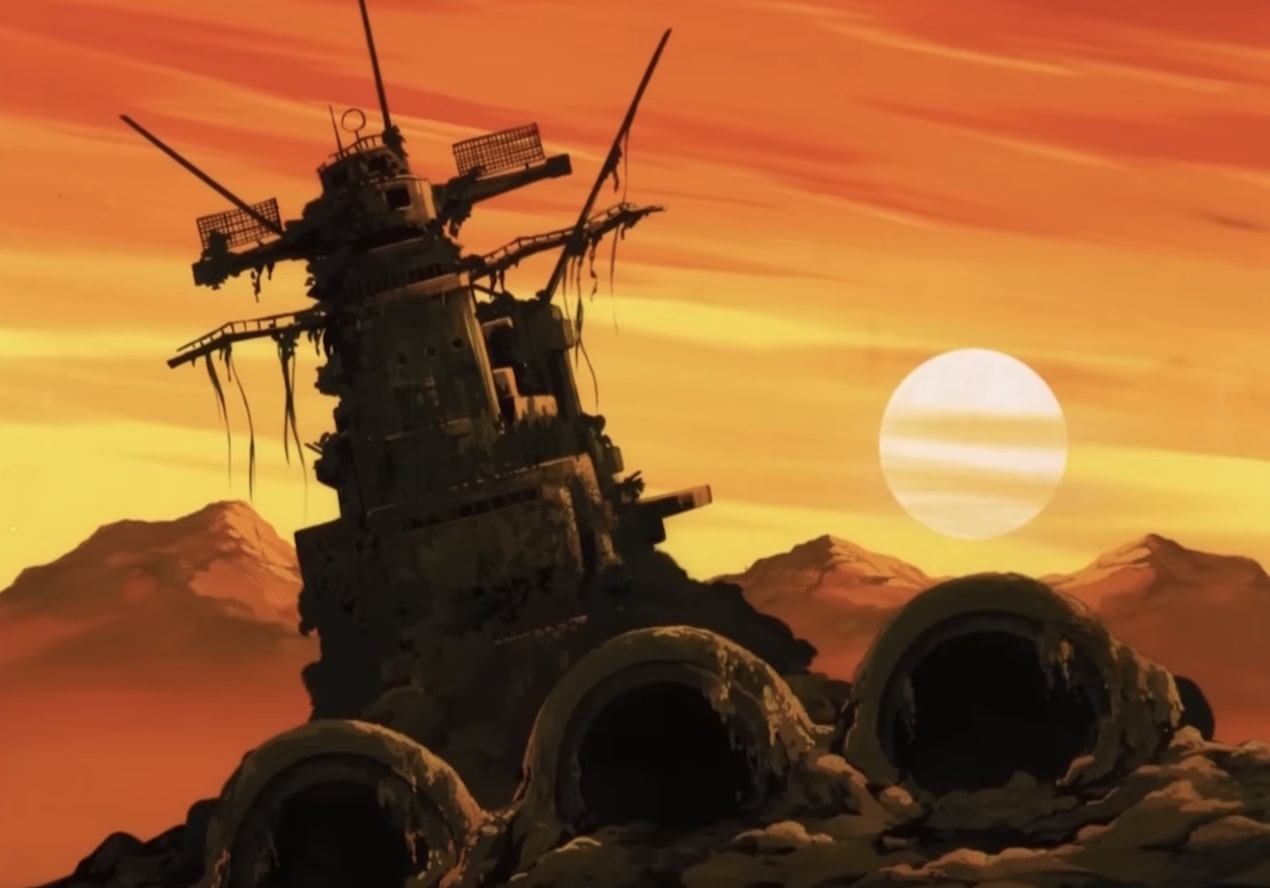
The 1970s can be said to be an era when the recognition and popularity of anime significantly increased, with the target age group for anime expanding beyond primarily children. By incorporating social themes into stories and aiming for relatable and emotional character designs, anime became content that adults could thoroughly enjoy as well.
The first catalyst for this shift was the 1974 anime series “Space Battleship Yamato (宇宙戦艦ヤマト).” Initially struggling with low viewership and facing cancellation midway through its run, Space Battleship Yamato managed to capture a new audience of young adults through its appealing sci-fi setting, character designs showcasing the growth of immature youths, and the theme of a world crisis caused by radioactive materials (notably, this was before the Chernobyl disaster brought the dangers of radioactive materials back into public consciousness).
Another significant event in 1974 was the broadcast of “Heidi, Girl of the Alps (アルプスの少女ハイジ),” a project that Hayao Miyazaki and Isao Takahata worked on after moving to an animation company Zuiyo, which later became known globally as an anime series. It’s historically important as a successful adaptation of children’s literature into anime and has had a wide-ranging influence on later Ghibli works and various other anime through its meticulous depiction of daily life.
One proof of the broadening fan base for anime was the publication of anime-specific magazines, represented by the launch of Animage in 1978.
The groundwork for anime’s popularity was being laid. If the broadcast of Astro Boy in 1963 marked the first anime boom, then the second anime boom began with the 1979 broadcast of “Mobile Suit Gundam (機動戦士ガンダム).” Mecha anime, with robot main characters, like Tetsujin 28-go (鉄人28号) aired from 1963 and Mazinger Z (マジンガーZ) which started in 1972, is an indispensable genre in the history of anime. The Mobile Suit Gundam series, which continues to release new titles to this day, became an explosively popular series within this genre.
The Gundam series was created by none other than Yoshiyuki Tomino. His work began to draw attention to the distinctive authorship of anime directors themselves, separate from their creations. Yoshiyuki Tomino joined Mushi Production, founded by Osamu Tezuka, in 1964 and participated in the production of Astro Boy. He made his directorial debut with the 1972 anime series “Triton of the Sea (海のトリトン),” utilizing this experience to create Mobile Suit Gundam in 1979.
1979 was indeed a crucial year in the history of anime, with the release of Hayao Miyazaki’s “The Castle of Cagliostro (ルパン三世 カリオストロの城)” and Rintaro’s “Galaxy Express 999 (銀河鉄道999)” movie also happening that year.
The era also established the genre of slice-of-life comedy anime. In the late 1960s, “Osomatsu-kun (おそ松くん)” and “Perman (パーマン)” were produced by Studio Zero, a studio founded by Fujiko Fujio (藤子不二雄), known as the manga artist of “Doraemon (ドラえもん).” Additionally, A-Production (now Shin-Ei Animation) created “Obake no Q-Taro (オバケのQ太郎),” “Lupin the 3rd Part I (ルパン三世 TV第1シリーズ),” and “The Gutsy Frog (ど根性ガエル)” in the early 1970s.
Anime in the 1980s

The 1980s can be considered the era of the flourishing of manga, the media that supports anime.
The most popular manga magazine, Weekly Shonen Jump, which was first published in 1968, saw many of its popular manga series adapted into anime. In 1981, the manga by Akira Toriyama was adapted into the anime “Dr. Slump: Arale-chan (Dr.スランプ アラレちゃん),” and in 1983, the legendary soccer manga “Captain Tsubasa (キャプテン翼)” was turned into an anime. The anime series “Fist of the North Star (北斗の拳)” began in 1984, and “Dragon Ball (ドラゴンボール)” started in 1986.
Following these, “YuYu Hakusho (幽☆遊☆白書)” was adapted into an anime starting in 1992, and Slam Dunk began in 1993. By the end of 1994, Weekly Shonen Jump reached a golden age, surpassing 6.5 million copies in circulation. This led to the broadcast of some of the most famous modern anime worldwide, including One Piece starting in 1999 and Naruto in 2002.
Returning to the 1980s, this period also saw the creation of the prototypes for the current magical girl series. “Creamy Mami, the Magic Angel (魔法の天使クリィミーマミ)” started in 1983, leading to a lineage connected to the “Sailor Moon (美少女戦士セーラームーン)” series starting in 1992, and continuing to “Revolutionary Girl Utena (少女革命ウテナ)” in 1997 and the “Pretty Cure (プリキュア)” series in the 2000s, with their origins tracing back to the 1980s.
The 1980s also saw the birth of several masterpiece feature-length anime movies. In 1984, Hayao Miyazaki’s “Nausicaä of the Valley of the Wind (風の谷のナウシカ)” was released, produced by Topcraft, which became the foundation of Studio Ghibli. This success led to the production of Ghibli’s first work, “Castle in the Sky (天空の城ラピュタ),” in 1986.
Moreover, the 1988 release of “Akira” is still one of the most globally acclaimed anime films. Like Hayao Miyazaki did with Nausicaä of the Valley of the Wind by adapting his own manga into an anime, Akira’s manga artist, Katsuhiro Otomo, served as the film’s director.
As directors with unique characteristics began to attract attention, Mamoru Oshii became widely recognized. He served as the chief director of “Urusei Yatsura (うる星やつら),” which began broadcasting in 1981 and is evaluated as a pioneering work in the current slice-of-life romantic-comedy genre.
Emerging as the third media for anime alongside movies and TV was OVA (Original Animation Video), a format effectively utilized for producing anime made for a niche audience. Initially defined as video-only sales, it now includes extras and extra episodes of TV series sold as OVAs.
The first OVA was “Dallos (ダロス),” released in 1983, directed by Mamoru Oshii. Following this, Mamoru Oshii continued to produce quality works primarily in the OVA field.
This trend of adapting popular manga into anime, which began with Astro Boy in 1963, led to the common debate in the 1980s between fans of the original manga and fans of the anime adaptations.
The mid-1980s saw anime broadcasting numbers double compared to the previous decade, but the latter half of the 1980s saw a temporary decline in the anime boom with the emergence of video games like Super Mario Bros., Dragon Quest, and Final Fantasy.
▽Check out the best anime in the 1980s!▽
The 80's and 90's were a time when many anime were aired that turned you into an otaku. In the 1980s, the early years of[…]
Anime in the 1990s

As mentioned before, the trend of popular manga from Weekly Shonen Jump being successfully adapted into anime continued into the 1990s, but this decade was marked by the spread of the internet and further advancements in animation technology.
First and foremost, an anime that left a profound impact on anime history must be discussed: “Neon Genesis Evangelion (新世紀エヴァンゲリオン).” This original anime, created and directed by Hideaki Anno, was broadcast from 1995 to 1996. It was clearly aimed at the young adult demographic, significantly drawing this target audience into the realm of anime. Considering the completion of the latest Evangelion tetralogy, “Rebuild of Evangelion (ヱヴァンゲリヲン新劇場版),” in 2021, the significance of Space Battleship Yamato from 1974, which greatly influenced Hideaki Anno, remains immense today.
Furthermore, Neon Genesis Evangelion was the first anime to spark widespread discussion among fans on the internet, developing into a social phenomenon. The series barely revealed the backgrounds of its setting and characters, and the existence of the enemies, the Angels, was not fully explained, leaving much to mystery. This ambiguity is a significant reason why the anime became such a topic of conversation.
Although video games became popular in the late 1980s, 1997 saw the start of the “Pokémon (ポケットモンスター)” series, an anime still highly successful today based on a game. The first Pokémon anime movie, “Pokémon: Mewtwo Strikes Back! (劇場版ポケットモンスター ミュウツーの逆襲),” released the following year, was a success both domestically and internationally, recording over $85 million at the box office in America and securing a top spot in the history of Japanese feature-length anime films.
Another anime that spread overseas early on was “Ghost in the Shell (GHOST IN THE SHELL / 攻殻機動隊),” released in 1995 and ranked first on the Billboard video sales chart in 1996. The term “Japanimation” was sometimes used to refer to Japanese animation, but the word “anime,” which originated in the 1970s, has since become the standard term. Ghost in the Shell is a representative work of Mamoru Oshii, one of the pioneers of OVA success, and it effectively utilized digital processing technology while based on the traditional 2D cell animation style, showcasing the possibilities of animation technology development during this era.
The 1990s to 2000s also saw an increased presence of Studio Ghibli, led by Hayao Miyazaki, with notable films like Porco Rosso (紅の豚) in 1992, Princess Mononoke (もののけ姫) in 1997, and Spirited Away (千と千尋の神隠し) in 2001. Spirited Away’s win at the 75th Academy Awards for the Academy Award for Best Animated Feature, a first for a Japanese anime, solidified Ghibli’s status both in name and reality.
One aspect of anime’s global recognition and popularity is the hosting of anime events overseas. In 1991, Anime Convention 91 was held in San Jose, California. As the event name suggests, the word “anime” was already in use. The following year, it was renamed Anime Expo and has continued to be the world’s largest anime event.
▽Check out the best anime in the 1990s!▽
Beyond the 1980s, when anime was favored by a small group of otaku and became popular with many people, the 1990s saw a […]
Anime in the 2000s
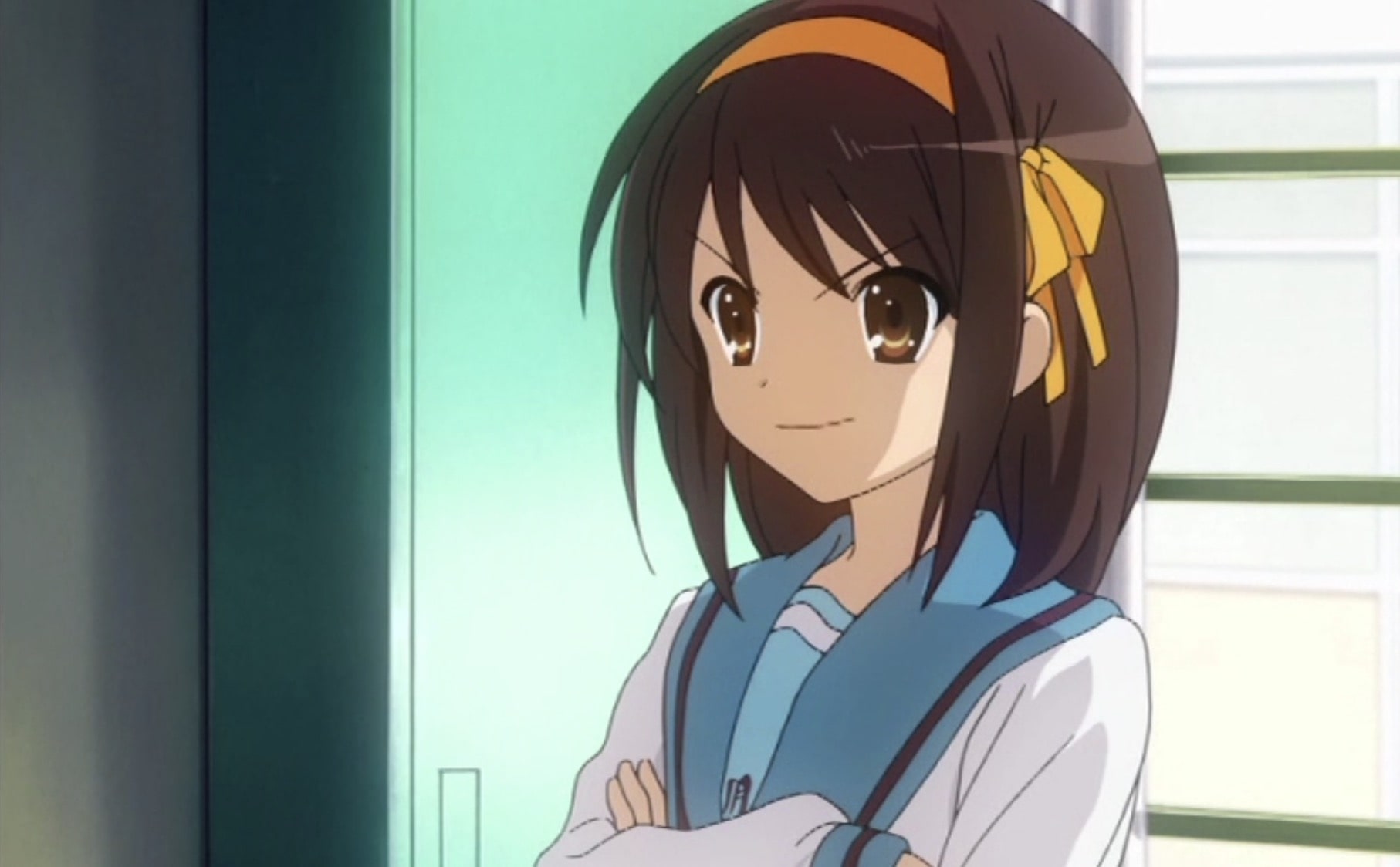
Entering the 2000s, following the likes of Hayao Miyazaki, Mamoru Oshii, and Hideaki Anno, directors with unique individual styles began to emerge. Satoshi Kon, who debuted with “Perfect Blue (パーフェクトブルー)” in 1997 and received worldwide acclaim for works like “Paprika (パプリカ)” in 2006. Mamoru Hosoda quickly became a top director with the release of “Digimon Adventure: Our War Game! (デジモンアドベンチャー ぼくらのウォーゲーム!)” in 2000 and “The Girl Who Leapt Through Time (時をかける少女)” in 2006. Makoto Shinkai completed “Voices of a Distant Star (ほしのこえ)” as an independent project in 2002 and has become one of the most well-known anime directors today. Also, Goro Miyazaki, son of Hayao Miyazaki, released Tales from “Earthsea (ゲド戦記)” in 2006.
The year 2006 was symbolic for the anime industry, marking the birth of several masterpiece anime films and the broadcast of one of the modern anime series’ representatives, “The Melancholy of Haruhi Suzumiya (涼宮ハルヒの憂鬱)”, produced by Kyoto Animation. The Melancholy of Haruhi Suzumiya was an anime adaptation of a light novel, and from around this time, many popular light novels, much like manga, began to be adapted into anime.
The 2000s also saw a significant rise in the popularity of the slice-of-life genre, focusing on the everyday lives of student characters, a specialty of Kyoto Animation. Many fans actually visited Washinomiya in Saitama Prefecture, the setting for “Lucky Star (らき☆すた),” broadcast in 2007. This “pilgrimage” to anime sites became a social phenomenon and continues to be a part of anime culture. P.A. Works, an anime studio established in Toyama in 2000, is known for producing anime set in nearby locales, such as Toyama and Ishikawa.
Moreover, the late-night timeslot around 1-2 AM, which now commonly features new anime broadcasts, began airing anime in the late 1990s. The Noitamina (Animation spelled backward) block, introduced by Fuji TV in 2005, significantly boosted the popularity of Late-night anime (Shinya anime). Hits such as “Honey and Clover (ハチミツとクローバー)” in this Noitamina slot, followed by “Anohana: The Flower We Saw That Day (あの日見た花の名前を僕達はまだ知らない。)” in 2011 and “Psycho-Pass (PSYCHO-PASS サイコパス)” in 2012, greatly expanded the anime fanbase.
As the number of late-night anime increased, the annual number of anime broadcasts exceeded 200 titles in 2004 and 270 in 2006. This mass production of anime was made possible by the Production Committee system, where multiple companies invest in the production of an anime, creating short series with less risk (such as 12 episodes per season). However, this system also poses challenges, as it does not allow for long-term broadcasting from the outset, leading to delays in creating sequels for popular anime. Additionally, the profit going to the crucial anime studios is minimized, making it a less than ideal environment for animators.
The 2000s also saw the birth of a new genre of culture, termed “2.5-dimensional,” bridging the gap between the two-dimensional worlds of manga and anime and the three-dimensional world of stage plays. The stage musical adaptation of the popular sports manga “The Prince of Tennis (テニスの王子様),” serialized in Weekly Shonen Jump starting in 1999, “Musical: The Prince of Tennis,” has continued to generate new fans as a pioneering presence in the 2.5-dimensional theater boom.
▽Check out the best anime in the 2000s!▽
The 2000s arrived, continuing the trend of the 1980s and 1990s, a period of anime prosperity. Unlike the early stage, t[…]
Anime in the 2010s

Since the 2010s, anime as a content form has already achieved global penetration and shown industry maturity. Yet, despite this, the works themselves have continued to evolve year by year.
Firstly, “Puella Magi Madoka Magica (魔法少女まどか☆マギカ),” produced by Studio Shaft and broadcast in 2011, has been rated as one of the greatest masterpieces in history. Not only did it feature a contrast between cute characters and a scary dark fantasy, along with an unpredictable storyline, but it also became a topic of discussion when the climax was postponed due to the Tohoku earthquake and tsunami on March 11.
In 2012, “Evangelion: 3.0 You Can (Not) Redo. (ヱヴァンゲリヲン新劇場版:Q)” was released, presenting a story of the future so distinct from the previous two remakes of the 1995 TV series that it could be considered an entirely new work.
The anime series adaptation of the popular manga “Attack on Titan (進撃の巨人)” was realized by Wit Studio, which became independent from Production I.G., in 2013. Its unique, immersive battle scenes are a standout feature of this anime. That same year, Studio Sunrise, known for Gundam and “Cowboy Bebop (カウボーイビバップ),” released a significant new genre work, “Love Live! (ラブライブ!).” This idol anime became a cross-domain success, spanning manga, movies, radio, CDs, online streaming, live performances, and pilgrimage to sacred sites, starting with the anime.
In 2013, Studio Ghibli’s two great masters each released new anime films. Isao Takahata released “The Tale of the Princess Kaguya (かぐや姫の物語)” after 14 years, which became his final work. Hayao Miyazaki completed “The Wind Rises (風立ちぬ)” and announced his retirement from feature-length anime production with this work, although he retracted this announcement in 2016.
The most significant year of the 2010s is considered to be 2016. Makoto Shinkai’s “Your Name (君の名は。)” was a domestic and international blockbuster, attracting a wide audience to anime. This brought renewed attention to Shinkai and his works, now regarded as one of the world’s leading anime directors. Known for fully utilizing modern digital technology in animation production, this allowed him to single-handedly produce Voices of a Distant Star in 2002. His signature style includes beautifully depicted landscapes and monologues by main characters.
2016 was also the year Sunao Katabuchi released “In This Corner of the World (この世界の片隅に),” a documentary-like anime film set in Hiroshima during World War II, and Naoko Yamada directed “A Silent Voice (聲の形).”
▽Check out the best anime in the 2010s!▽
In the past few decades, the anime industry has seen exponential growth on a global scale. Nowadays, hundreds of new ani[…]
A New Era: Anime in the 2020s
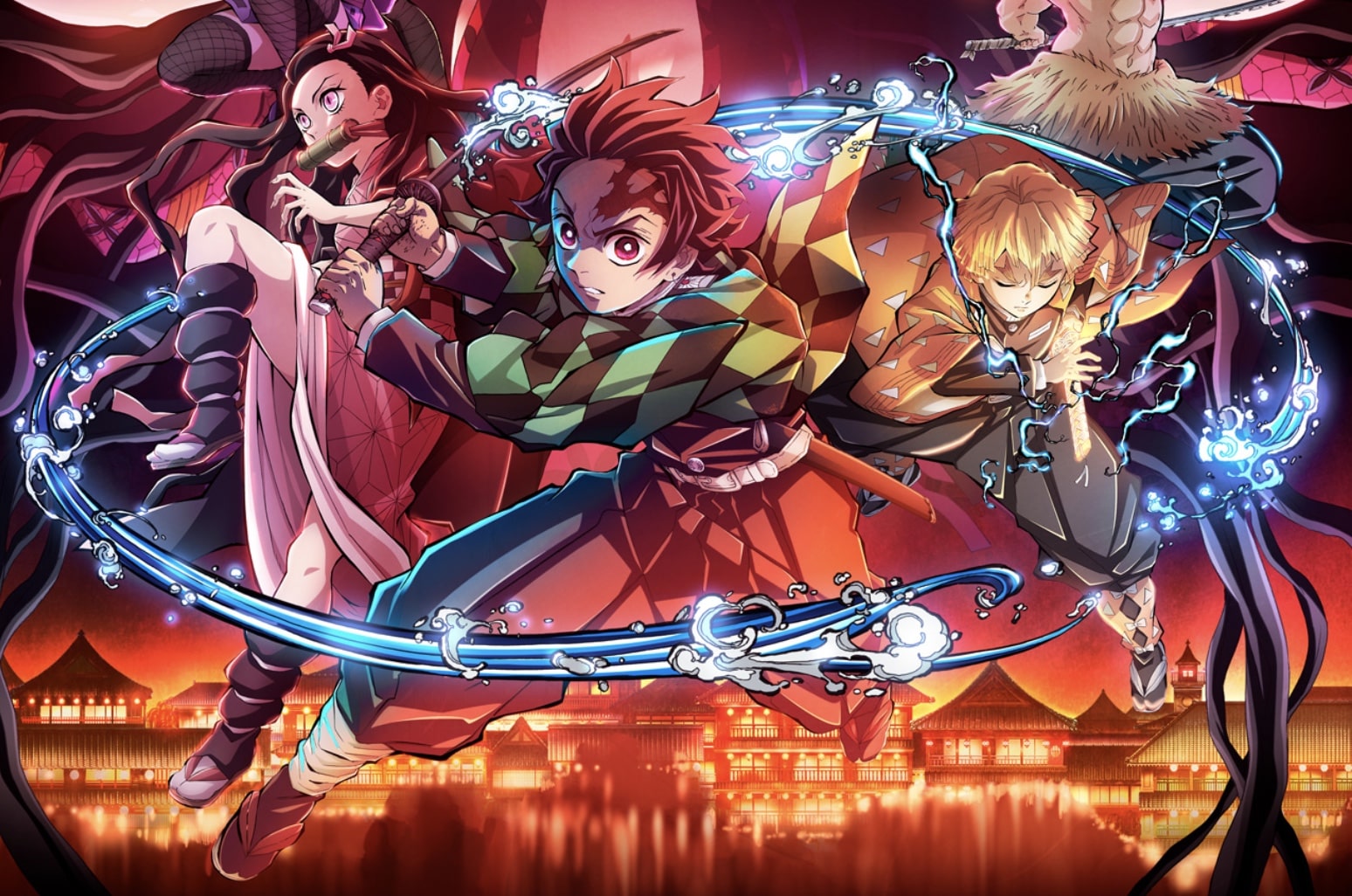
Anime underwent rapid globalization from the late 2010s into the early 2020s, a development driven by online streaming services. The COVID-19 pandemic, which began from the end of 2019 to the beginning of 2020, led to the closure of cinemas worldwide. With many people forced to stay at home, online streaming services became a relied-upon source of entertainment.
Netflix, a leading subscription video streaming service, launched its streaming service in 2007 and made a full-scale entry into Japan in 2015. Until then, anime viewing was predominantly through television or cinemas, but following the spread of the pandemic, a vast number of people began using these types of services. The huge success of “Demon Slayer: Kimetsu no Yaiba (鬼滅の刃),” which began broadcasting in 2019, was achieved through platforms like Netflix. Furthermore, “Demon Slayer: Kimetsu no Yaiba – The Movie: Mugen Train (劇場版 鬼滅の刃 無限列車編)” recording the highest box office revenue in Japan’s history in 2020 can also be attributed to the groundwork laid by these streaming services. The timing of its release, as people began to emerge from lockdowns, also played a part.
In 2023, “The Boy and the Heron (君たちはどう生きるか),” a new work by Studio Ghibli directed by Hayao Miyazaki, won the Academy Award for Best Animated Feature at the 96th Academy Awards the following year. This was a significant achievement, the first since Spirited Away won in 2003.
▽Check out the best anime in the 2020s!▽
We, living in the 2020s, which can indeed be described as the peak of anime, are truly fortunate. Anime has now expanded[…]
The Future of Anime
Setting aside how it will be applied, the development of animation technology is likely to continue. The success of 3DCG demonstrated by “The First Slam Dunk,” released in 2022, is a recent memory that suggests the potential for success in this area.
There will also remain challenges in creating a sustainable environment for the growth of animators in the anime production scene, which is characterized by high volume but low profit. As global corporations increasingly produce anime, there’s a question of whether small production companies can survive, except for a few successful ones.
Another challenge lies in who will succeed Hayao Miyazaki, who has long been a leading figure in not just the Japanese but also the global anime industry. The question of who will lead the global anime scene following Miyazaki, who has announced his retirement multiple times, remains. Mamoru Hosoda and Makoto Shinkai have been long mentioned as successors to Miyazaki, but it remains to be seen whether creators of feature-length anime films, including Studio Ghibli, can maintain their brand value going forward.
There’s a hope that an environment satisfying for both creators and fans of anime can be realized, involving the surrounding manga and light novel industries, among others, and that anime can continue to grow together. And as a fan of anime, I hope to continue watching genuinely good anime in the future.
<<Recommended Articles>>
Anime, which means Japanese animations, is one of the most famous Japanese pop cultures. It has got more popular as a ge[…]
Anime has been one of the most popular movie categories all over the globe lately. A great number of anime come to the b[…]
Manga, which is known as Japanese comic books, has been one of the most famous and popular modern Japanese cultures worl[…]
<<Editor’s Picks>>
Light Novels are begin more well-known as a part of Japanese pop culture as well as anime and manga. Many popular anime […]
Anyone who loves to spend a weekend watching movies and series on video streaming platforms such as Netflix, Amazon Prim[…]
In recent years, hundreds of new anime have been produced annually and released worldwide. The majority of these are ada[…]
